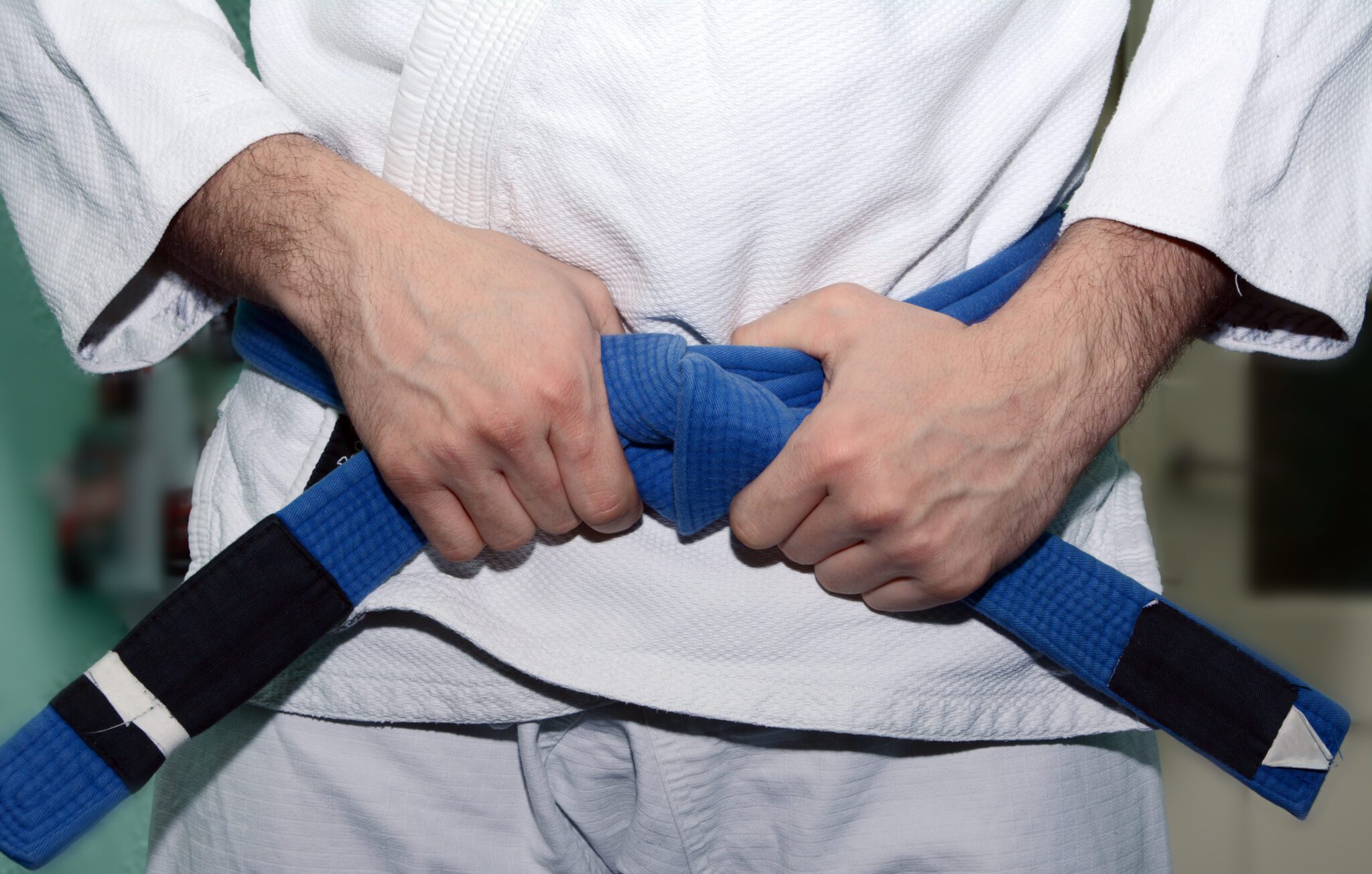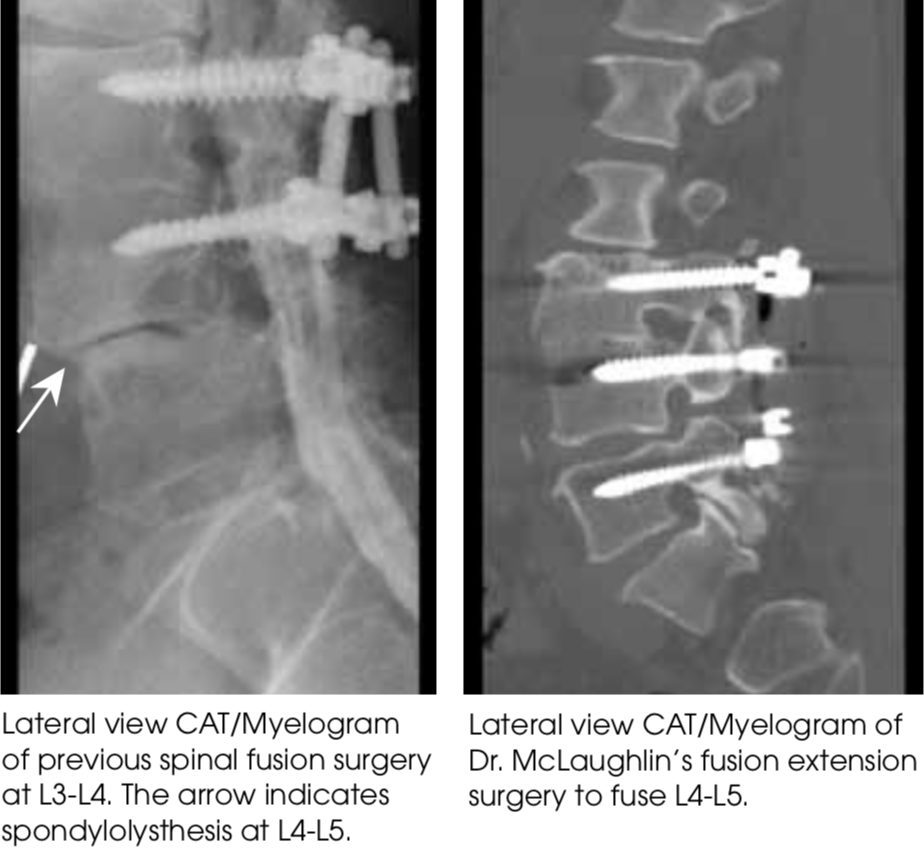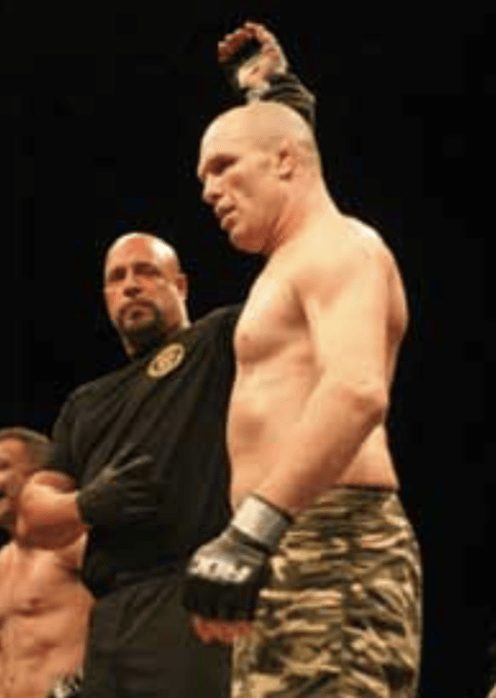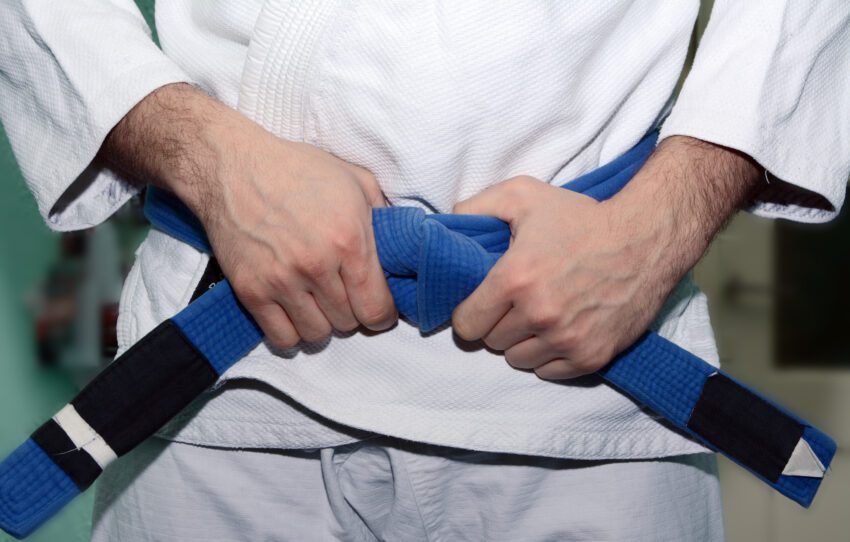
When mixed martial arts fighter Bill Scott felt severe pain in his lower back and numbness in his entire right leg, he thought it was the after-effect of a head-on car crash two years earlier. But a prominent neurosurgeon who examined Scott found a serious spinal problem that was unrelated to the accident.
During the consultation with Mark McLaughlin, MD, medical director of Princeton Brain & Spine Care, an MRI revealed that several of Scott’s lumbar vertebrae had collapsed, shifted to the right side of his body, and fused together. Although Scott had received a surgery to fuse the 3rd and 4th lumbar vertebrae many years ago, he was unaware of any problems un- til the fused bones began pressing on his spinal nerves and causing pain. When Dr. McLaughlin told Scott that a second spinal fusion procedure was necessary, he responded with a question:
“I asked him, ‘When will I be able to fight again?’,” said Scott, 47. “He said I shouldn’t, but as far as I was concerned, there wasn’t any question that I would, it was just a matter of when.”
Back Surgery: Realignment and Fusion
The primary goal of the five-hour surgery, performed by Dr. McLaughlin through a small incision in the low back, was to realign and fuse the 4th and 5th lumbar vertebrae to eliminate abnormal motion in the spine. The results would expectantly remove pressure from the spinal nerves in order to relieve pain. Spinal disks, which consist of cartilage, were removed from between the vertebrae; bone tissue taken from Scott’s hip was inserted to replace them. The implanted bone tissue, in conjunction with the body’s natural bone- growth processes, created the fusion of the vertebrae.

Dr. McLaughlin inserted titanium rods and screws at the site of the surgery. The screws, inserted in three consecutive vertebrae, served as anchor points for the connecting rods. The rods and screws kept the lumbar region stable and prevented motion that hinders the proper fusion of the vertebrae.
After Back Surgery
After the surgery, Dr. McLaughin explained to Scott that it would take three months for the vertebrae to fuse properly and wearing a back brace the entire time was necessary for the best outcome.
Scott followed his instructions to the letter and the procedure was successful. However, Dr. McLaughlin was skeptical about his patient’s chances of returning to his sport.
>>>> Back and Numbness: A Spinal Champion Overcomes
“After the healing was completed, the area where we performed the surgery was solid as cement, and it still is,” says Dr. McLaughlin. “I had some concerns about the levels of the spine above and below the surgery. In 2008 we inserted more screws to give more stability to the lower vertebra, but all these years later, everything is holding up very well.”
At the end of the recovery period, Dr. McLaughlin reviewed an X-ray of Scott’s spine and gave him the OK to start exercising again. But he didn’t approve a return to fighting. “Dr. McLaughlin is a former champion wrestler himself,” says Scott, “and as much as I respect his medical opinion, I had other plans.”
Returning to Jiu-Jitsu
Scott, a 1st Degree Brazilian Jiu-Jitsu Black Belt and a former All-American wrestler at Middlesex College, didn’t follow a formal rehab program. After spinal fusion, patients are advised to stay active with brief, gentle exercise and stretching which promotes blood flow and healing. But when Scott returned to his martial arts training center (Bill Scott BJJ- Brazilian Jiu-Jitsu Shore Academy) in his hometown of Point Pleasant, NJ, he picked up right where he left off.

“For my rehab, I just returned to my usual training for Brazilian Jiu-Jitsu and instructing martial arts students. I wanted to get right back in the swing of things, and I went at full speed right away. I believe that a person’s mind-set is extremely important in this type of situation. I’ve seen people who have had this type of injury become depressed and feel sorry for them- selves, and I could have easily gone that route. But I didn’t allow myself to think that way. I worked hard, and I was determined not to let the situation damage my life. I wanted to get back to being active and doing what I love to do.”
These days, in addition to a rigorous schedule of teaching martial arts, including self-defense training for local and state police officers in New Jersey, Scott competes in and has won several mixed martial arts bouts. He is currently training for the 2012 Pan Jiu-Jitsu No Gi Championship which takes place this fall.
>>>>>> Scoliosis Didn’t Stop Her: Dancer Paige Fraser
“I’m a fighter; it’s what I do for a living, and it’s also my attitude,” says Scott. “When you participate in my sport, you’re going to have injuries now and then. When one happens, I get fixed up, move on, and keep fighting.”
Working with the unstoppable Scott taught Dr. McLaughlin a great lesson:
“I learned that you have to listen to your patient very closely, not only to understand how they feel physically, but also where they are emotionally. When I did Bill’s surgery and told him he really shouldn’t fight anymore, that was like telling him not to breathe. Instructing and competing in martial arts are in his DNA, and it was absolutely impossible for him to give it up.
When working with an elite athlete like Bill, a spine surgeon’s job is to provide the stability he needs to compete again the best he can. Scott re- turned to fighting and won matches, which is remarkable consider- ing the major surgery he had. His energy, enthusiasm, and positive attitude helped him pull through and inspire me.”
by Mark R. McLaughlin, MD, FACS
>>>> Wondering if back surgery is for you? Check out this resource.



